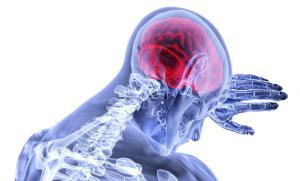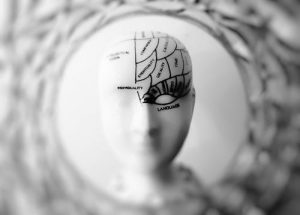 You may not realize it, but as you stand outside you are soaking up vitamin D. This is because the rays of sunshine beaming down on you help stimulate synthesis of this vitamin. Even with this natural source of vitamin D, some of us may still be deficient. Research shows that this may lead to issues with insulin sensitivity. Let’s learn a little more about this body’s need for the sunshine vitamin for optimal metabolic health.
You may not realize it, but as you stand outside you are soaking up vitamin D. This is because the rays of sunshine beaming down on you help stimulate synthesis of this vitamin. Even with this natural source of vitamin D, some of us may still be deficient. Research shows that this may lead to issues with insulin sensitivity. Let’s learn a little more about this body’s need for the sunshine vitamin for optimal metabolic health.
How much vitamin D do I need?
Just 30 minutes of sun exposure in the late morning and early afternoon will fulfill your vitamin D needs. However, you need to make sure you expose either your face, arms, legs, or back without sunscreen. Also, be sure to do this twice a week for optimal absorption.
But if you live in certain climates or have certain risk factors, you may be at risk for vitamin D deficiency. Those groups of people at risk for deficiency include:
- Breastfed infants
- Older adults
- People with limited sun exposure
- Dark-skinned persons
- Those with fat malabsorption issues
Health benefits of the sunshine vitamin
Vitamin D is well-known for its important role in bone health. It helps the body absorb calcium better. This is turn, can promote strong, healthy bones. However, besides bone health, new research shows the importance of this sunshine vitamin in other aspects of health. For example, some experts suggest that vitamin D could help improve metabolic health.
Vitamin D and metabolic health
A recent study looked at a group of nearly 100 adults at least 25 years old with newly diagnosed diabetes. The adults received either placebo or 5000 IU of vitamin D daily. Glucose tolerance tests and insulin sensitivity tests were done at baseline and after six months. Study results show that vitamin D supplements can help improve insulin sensitivity in those with type 2 diabetes or prediabetes. Those without type 2 diabetes did not see any significant improvement.
Because of this research, it shows the importance of having your vitamin D levels checked. If you can catch your deficiency, then you can start on a supplement to help protect your bone and metabolic health.
Other ways to improve metabolic health
Besides taking a vitamin D supplement, there are other things you can do to improve your metabolic health.
Move more: According to recent research, exercise can help you better manage blood glucose levels and improve insulin sensitivity. Therefore, try to move at least 30 minutes a day most days of the week for optimal heart and metabolic health. And don’t forget to add in some resistance training twice a week for about 15 minutes to help maintain lean muscle mass and healthy metabolism.
Eat more soluble fiber: Some research shows that eating more foods high in soluble fiber can help improve insulin sensitivity. Foods high in soluble fiber include oats, barley, nuts, seeds, beans, lentils, and some fruits and vegetables. Not to mention that soluble fiber slow digestion and help your body absorb more nutrients from the food you eat.
Taking dietary supplements when needed: Besides vitamin D, experts also suggest that consuming probiotics or omega-3 fatty acid supplements may help improve insulin sensitivity in those with type 2 diabetes. Also, supplements like Glucarex by Vita Sciences may help improve the health of those with diabetes. Glucarex contains compounds like chromium, alpha lipoic acid, and cinnamon. These natural compounds help promote healthy weight loss, metabolism, and blood glucose levels.
Take home message
There are many ways to help improve metabolic health. But one way you may have never thought of is getting enough vitamin D. Now that you know, it’s important to have these vitamin levels checked at least once a year so you can stay on top of your numbers. And along with moving more and eating a healthier diet, you can ensure optimal health.
-written by Staci Gulbin, MS, MEd, RD
References:
Lemieux, P., et al. (2019) “Vitamin D supplementation increases insulin sensitivity, beta-cell function.” European Journal of Endocrinology, https://doi.org/10.1530/EJE-19-0156
Lillis, C. (March 29, 2019) “Natural ways to improve insulin sensitivity.” Medical News Today.
Medline Plus (last updated July 10, 2019) “Soluble vs. insoluble fiber.”
National Institutes of Health Office of Dietary Supplements (last updated July 9, 2019) “Vitamin D.”
 Anxiety and depression can take a huge toll on quality of life. It can affect your work, relationships, and can also make it hard to take care of your yourself. However, recent research shows that having a pet may help reduce anxiety and depression. Therefore, let’s learn more about how a pet could improve mental health status as well as other ways to help yourself feel happier and healthier.
Anxiety and depression can take a huge toll on quality of life. It can affect your work, relationships, and can also make it hard to take care of your yourself. However, recent research shows that having a pet may help reduce anxiety and depression. Therefore, let’s learn more about how a pet could improve mental health status as well as other ways to help yourself feel happier and healthier. As you walk along the street during any summer carnival, it’s no doubt you’ll take in the sweet smell of cotton candy and the fragrance of fried foods like funnel cakes and fries. These fried foods can hold so many memories for many of us spending time with family and friends. Not to mention that such treats can taste delicious. However, recent studies show that the more you eat fried foods, the higher your heart disease and stroke risk.
As you walk along the street during any summer carnival, it’s no doubt you’ll take in the sweet smell of cotton candy and the fragrance of fried foods like funnel cakes and fries. These fried foods can hold so many memories for many of us spending time with family and friends. Not to mention that such treats can taste delicious. However, recent studies show that the more you eat fried foods, the higher your heart disease and stroke risk. Although many of us may feel anxious from time to time, this anxiety may resolve after a hot bath or cup of tea. However, for a portion of the population, this feeling continues to affect them daily. It can impact daily life in a way that interrupts daily living such as work, sleep, and relationships. Therefore, for those with anxiety disorder, treatment options are necessary. Besides prescription medications, recent research shows that increasing intensity of exercise may help reduce symptoms of anxiety disorder.
Although many of us may feel anxious from time to time, this anxiety may resolve after a hot bath or cup of tea. However, for a portion of the population, this feeling continues to affect them daily. It can impact daily life in a way that interrupts daily living such as work, sleep, and relationships. Therefore, for those with anxiety disorder, treatment options are necessary. Besides prescription medications, recent research shows that increasing intensity of exercise may help reduce symptoms of anxiety disorder. Have you ever been told to eat your veggies? Many of us have been told as children that vegetables and other plant-based foods would help us grow strong. And as adults, you may have been told that eating more vegetables will help you manage your weight. But recent studies show that plant-based foods may also be good for your gut health, especially for those with Crohn’s disease.
Have you ever been told to eat your veggies? Many of us have been told as children that vegetables and other plant-based foods would help us grow strong. And as adults, you may have been told that eating more vegetables will help you manage your weight. But recent studies show that plant-based foods may also be good for your gut health, especially for those with Crohn’s disease. Recent statistics show that stroke is the number five cause of death and disability in the United States. This is why it’s so important to look into what factors may increase risk of this condition and work to reduce them. For example, a recent study shows that working long hours may increase one’s risk for stroke. Although this may not always be a factor that you can prevent, let’s learn more about this condition and ways you can lower your risk.
Recent statistics show that stroke is the number five cause of death and disability in the United States. This is why it’s so important to look into what factors may increase risk of this condition and work to reduce them. For example, a recent study shows that working long hours may increase one’s risk for stroke. Although this may not always be a factor that you can prevent, let’s learn more about this condition and ways you can lower your risk. If you have been told you are at risk for diabetes, then I’m sure you’ve been told to diet and exercise. This advice is nothing new to help lower your risk. However, new research confirms a method of diet and exercise that can prevent those with prediabetes from developing diabetes. Read below for more on this research and learn how you can lower your risk of this chronic condition today.
If you have been told you are at risk for diabetes, then I’m sure you’ve been told to diet and exercise. This advice is nothing new to help lower your risk. However, new research confirms a method of diet and exercise that can prevent those with prediabetes from developing diabetes. Read below for more on this research and learn how you can lower your risk of this chronic condition today. With so much focus on diet and exercise helping the heart, brain health may take a back seat in the wellness arena. However, the brain is the control center of the body, and in turn must not be neglected. During the month of June, it’s especially important to be aware of the brain disease known as Alzheimer’s. You may have heard of it before, but may not know what it entails. Let’s learn more about this disease and how you can be an advocate for this devastating brain health condition.
With so much focus on diet and exercise helping the heart, brain health may take a back seat in the wellness arena. However, the brain is the control center of the body, and in turn must not be neglected. During the month of June, it’s especially important to be aware of the brain disease known as Alzheimer’s. You may have heard of it before, but may not know what it entails. Let’s learn more about this disease and how you can be an advocate for this devastating brain health condition. Traffic, rude neighbors or co-workers, and financial stress are some the of common things in life that can cause stress. In turn, this stress can give you a headache. Besides literally being a pain, chronic headaches can reduce quality of life and lead to other health issues over time. In honor of June, which is Headache Awareness Month, let’s learn more about headaches and how you can manage them naturally.
Traffic, rude neighbors or co-workers, and financial stress are some the of common things in life that can cause stress. In turn, this stress can give you a headache. Besides literally being a pain, chronic headaches can reduce quality of life and lead to other health issues over time. In honor of June, which is Headache Awareness Month, let’s learn more about headaches and how you can manage them naturally. When you receive a diabetes diagnosis, it can be a life-changing time. This is because diabetes treatment can involve a change in diet, new medications, and checking blood glucose levels at home. Not to mention, that is can be scary to know that you have a condition that will be with you for life. It can be overwhelming and for some can cause depression. Fortunately, a recent study shows that adding exercise to your daily routine may help those with diabetes-related depression improve quality of life in body and mind.
When you receive a diabetes diagnosis, it can be a life-changing time. This is because diabetes treatment can involve a change in diet, new medications, and checking blood glucose levels at home. Not to mention, that is can be scary to know that you have a condition that will be with you for life. It can be overwhelming and for some can cause depression. Fortunately, a recent study shows that adding exercise to your daily routine may help those with diabetes-related depression improve quality of life in body and mind.